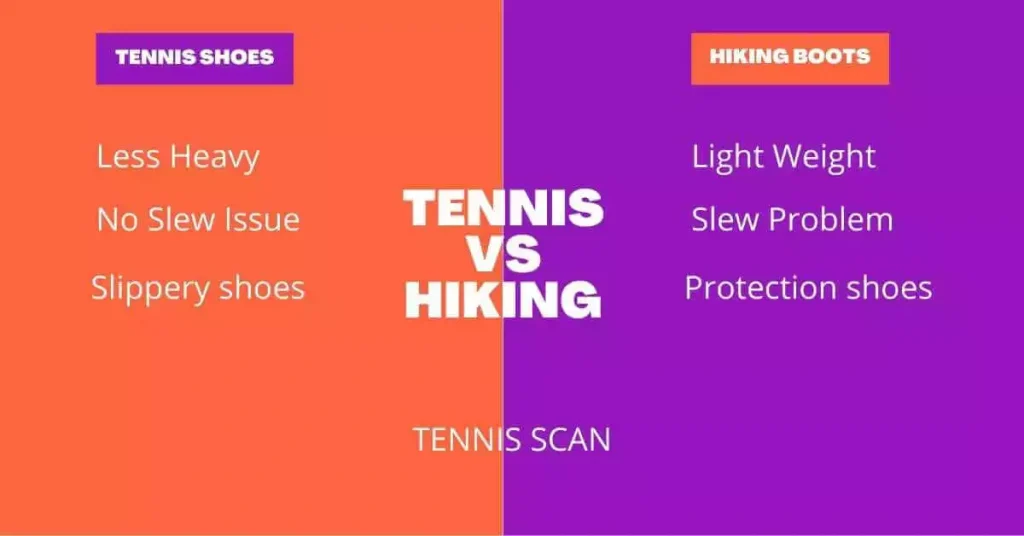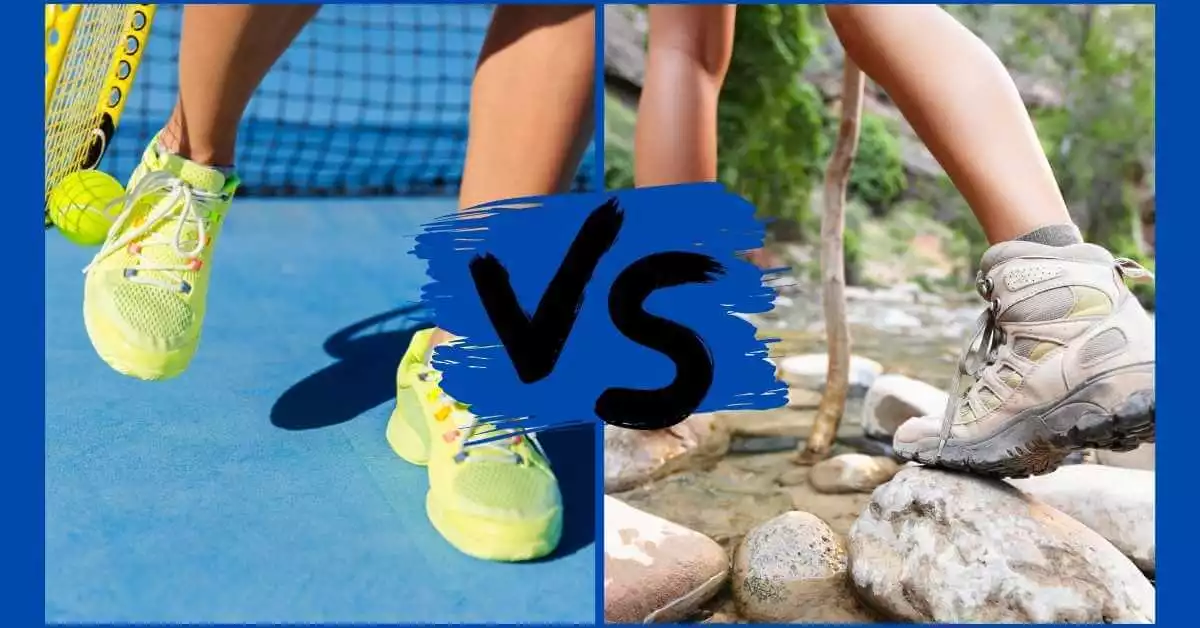According to the American Academy of Orthopaedic Surgeons, tennis shoes are designed to perform well on a court surface. As a result, they lack the type of deep-grooved, durable rubber tread that is so vital on the trail. In addition, certain trail shoes and hiking boots have extra padding in the soles to help reduce the shock of carrying a hefty pack.
Tennis shoes aren’t designed to handle the extra weight. Tennis shoes have various disadvantages on strenuous hikes when compared to trail shoes or hiking boots. They usually have a lower cut, which means they don’t provide much ankle support on the path. A strong and/or breathable “upper,” or the section that covers the tops of your feet, is also missing.
Hiking is defined as walking for a long period or distance through the woods or across the country. Hiking is a recreational activity that allows individuals to explore natural wonders. When correct equipment is not employed to provide a good and pleasant excursion, such experiences are frequently cut short or destroyed.
Today’s hiking footwear comes in a variety of styles. Tennis shoes are a viable alternative for hiking, but they may not be the most efficient or secure. The following are the most important considerations when deciding between boots and trail runners:
Are you new to hiking?
It takes some practice to stay upright on the trails when wearing a pack. Hiking boots have wide, sturdy bottoms that provide a stable foundation for every step.
What kind of terrain do you have on your trail?
For both stability and the ability to withstand wear and tear, slick terrain necessitates beefier boots. Their tough soles can withstand rock and root abuse, so your feet don’t have to. However, if it’s a lovely, meandering forest walk, light and slender footwear will suffice. If the trail is paved, even a pair of city sneakers will suffice. If you plan to hike in cold, wet weather, you should dress appropriately.
What body type do you have?
You’ve probably figured out if your body needs stronger support from your shoes in particular. If it does, and you intend to add a heavy pack to your weight, robust, stable hiking footwear might be the best option. You’re probably a suitable trail-runner candidate if you haven’t had any past concerns with leg and joint core strength, and you’re not going to carry a very hefty pack.
What will your speed be?
Is it a stroll or a brisk sprint? It’s easy to keep a fast pace when you’re wearing lightweight trail runners. Many thru-hikers wear them since they need to cover large distances in a short amount of time. On a trail as long as the AT, they’ll see multiple pairs of trail runners.
What’s the difference between hiking boots and tennis shoes?
The main difference between hiking boots vs tennis shoes is that Hiking boots often include strong lugs that dig into the ground and rubber that grips effectively on a variety of terrain. Light trail runners have little traction, but rugged and off-road models have a grip that is comparable to hiking boots. Some trail runners have a sticky rubber composition that helps them grasp wet rocks and logs.

However, many trail runners are intended to grip on the fly, so they won’t have the same traction at a slower hiking speed, according to Henkes. When you use less force in each stride, the physics changes.
Footwear and Lighter hikes
Even if you’ve determined that tennis shoes and other fitness sneakers won’t cut it on the trail, you’ll need to choose a variety of trail footwear options. If you’ll be walking on paved or well-kept paths and won’t be carrying a heavy load, a pair of walking shoes may suffice. Walking shoes with heel collars, mesh uppers, cushioned insoles, a large toe box, and an Achilles tendon protector are recommended by Mayo Clinic. “Trail runners” are a cross between hiking boots and walking boots. This running shoe is designed for off-road jogging. According to the orthopedic-focused Hospital for Special Surgery, they’re stiffer than conventional running shoes but still exceptionally lightweight.
Advantages
Hiking in tennis shoes has several advantages, one of which is that it is lighter. Tennis shoes are less heavy than other hiking footwear. After this, people who want lightweight or basic hiking generally prefer a tennis shoe to a hiking shoe. Tennis shoes are airy, comfy, easy to remove, and quickly dry.
Consequences
Hiking with tennis shoes has a slew of problems. Tennis shoes’ soles aren’t built to grip things like mud, gravel, and tree bark that you’ll find while hiking. Tennis shoes put you at a higher risk of slipping and causing harm. Tennis shoes are low-cut, and they don’t provide the same level of ankle support and protection as a hiking boot.
Water, food, and emergency supplies are carried in backpacks by hikers. With an ankle-supporting boot, extra weight from the backpack may be effectively controlled.
Choices
Consider the length, distance, and intensity of your hike. Considering these characteristics can help you choose the right pair of shoes. If you’re going on a day hike and will be taking a light pack, go for a light hiking shoe. The soles are elastic and built to grip. For multi-day journeys with a light load, hiking boots with extra arch support are employed. They need to be broken in, so put them on before your vacation to reduce blisters. If your trip will last more than a day and you’ll be carrying big packs over different terrain, opt for a backpacking boot. Mountaineering boots are made to carry high loads and support claws when traveling on glaciers.
Suggestions
Tennis shoes should not be used for hiking, according to Stacy Taniguchi, Ph.D., a professor of recreation management at Brigham Young University, because of the increased risk of injury. It’s best to wear hiking footwear with grip, ankle support, and waterproofing. Find the trouble to break in your boots by walking around in them before going trekking. Hiking trips are more enjoyable when you choose the right footwear.
Conclusion
Although you could hike in any of your old shoes, a decent pair of hiking boots or shoes can make your trip into the backcountry much more fun. On and off the trail, they offer excellent support, water resistance, and traction. They take you to places that most people only fantasize about visiting. But, whatever you do, buy them a little early so you can test them out with a heavy backpack. To make them even comfier, try a variety of socks.
